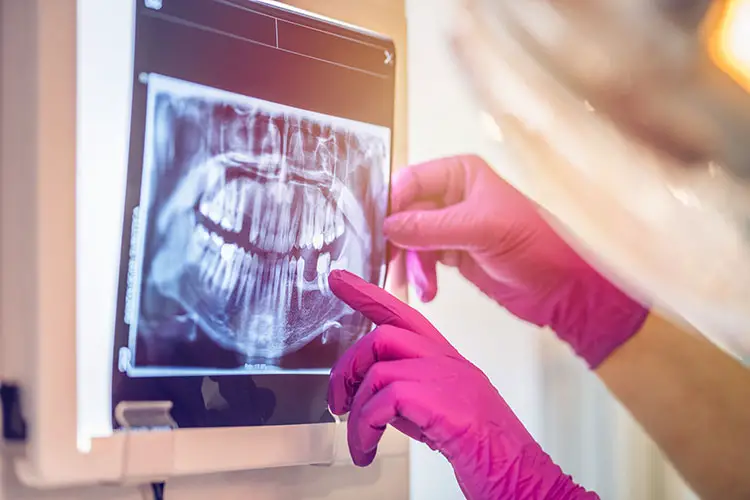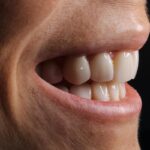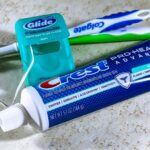When it comes to correcting bite alignment issues, the options for treatment dwindle down with age and severity. Although a quick, easy, and painless fix to our bite problems would be ideal, there are cases where there simply is no “easy” fix. The idea of having to undergo surgery that involves moving around bone structure in your face may sound terrifying but these surgeries are quite successful.
What Is Jaw Surgery?
In essence, jaw surgery for bite align problems aims to change the position of the jaw bone so that the teeth can be corrected to have a good bite alignment. The type of bite issues determines which kind of surgical technique is used and what is done to the jaw.
Mandibular Osteotomy
This surgery is centered on the lower jaw, known in scientific terms as the mandible, and is used to either shorten or length it. During the surgery, the jaw is completely cut in the area of the last molar in the back of the mouth. The cut is clean through and detaches the front section of the jaw from the back portion. If the jaw needs to be shortened, a small section of the bone is removed. When correcting the issues requires lengthening the lower jaw, a space is made between the sections of bones that have been separated and grafting material is inserted to promote bone growth. Although you may have to have your jaw wired shut for a short time period after surgery, it’s far more common that screws and metals plates are used to hold the jaw in its new position instead.
Le Fort I Osteotomy
In contrast to a mandibular osteotomy, a Le Fort I concentrates on the maxillary bone, or upper jaw. Due to the closeness to the sinus cavity and other structures, surgery on the upper jaw is slightly more complicated than the lower jaw. A cut has to be carefully made above the roots of the teeth to sever the part of the bone holding the teeth from the rest of the skull. This is done in sections and depending on the particular malocclusion issue, it may not need to be done throughout the entire upper jaw. Once the sections of bone are detached, they are then moved into a position that provides a correct bite alignment with the lower teeth and secured into place with screws.
S.A.R.P.E.
Surgically Assisted Rapid Palatal Expansion, generously shortened to S.A.R.P.E., is a type of surgery that aims to expand the upper jaw. It is generally only used when the upper jaw is too narrow and the teeth are not able to be straightened due to not having enough room. Treatment using SARPE is split into two portions. The first is the actual surgical procedure. The upper jaw is cleanly broken down the center, creating a fracture line that extends from between the two front teeth to the back of the upper jaw bone.
The second portion is reliant on the patient. A device called an extender is placed against the roof of the mouth, anchored to the teeth on both sides, and has a turning mechanism that allows to it be slowly widened. Over a course of weeks, or sometimes months, the patient is required to ‘turn’ the device a couple times a day to gradually push the separated halves of the upper jaw wider apart. This will cause a sizable gap to form between the two front teeth but it is only temporarily. Once the upper jaw has reached the correct width, the teeth straightened and pulled back together by braces. The entire process takes a couple years so it does require some patience and dedication.
Is Jaw Surgery Painless?
All of these surgeries are invasive and involve cutting through bone so there is some pain associated with them.
The thought of have your jaw broken and then moved around is a scary one. The details of the surgeries are not comforting by any means but despite how gruesome the procedures sound, you won’t actually experience any of it. All of the surgeries are done under anesthesia. You won’t feel a thing and you’ll have no recollection of what went on because you won’t be awake during the procedure. The pain during recovery is reported to be mild in the majority of cases and easily manageable with prescribed pain medication.
Nose bleeds are common after upper jaw surgery because blood can pool in the sinus cavity during the operation and then slowly comes out during the next few days following the surgery. Bruising and swelling are also common around the jaw and with upper jaw surgery and it’s not uncommon for the bruising to appear underneath your eyes and around your nose as well.
During a mandibular osteotomy, very small incisions may have to be made into your lower cheek to allow them to get the screws into the correct place but this isn’t common. More often than not, all incisions made during jaw surgery are done inside of the mouth and do not leave visible scars. Stitches will be needed but most of the incisions are smaller sized so although there may be a little discomfort from the stitches, there won’t be too many.
Following S.A.R.P.E surgery, the main discomfort will come from the swelling and the odd feeling of the extender. While some people report headaches after turning the device to widen it, it is not painful. Once the initial healing from the surgery is over within a few weeks, the second portion of the treatment is comparable to regular braces treatment – there will be some soreness from the braces being tightened and pressure being put on the teeth but it’s nothing that can’t be fully managed with an over-the-counter pain medication.
Recovering from jaw surgery can be uncomfortable because will affect your ability to chew correctly for a couple weeks but in comparison to other types of surgeries, it doesn’t score very high on the pain scale.
Will Surgery Correct Your Bite?
A perfect outcome with jaw surgery can not be guaranteed as there are so many variables. Some patients have to undergo a second and even third round of jaw surgery to get closer to the desired outcome. In theory, being able to realign the bite directly from the root of the problem, should eliminate many of the outcome uncertainties that come with bite correction treatments. A complete relapse, with the jaw returning to its original position, is fairly rare although there is usually a small amount of relapse during the healing period that the surgeon takes into account when determining how much re-positioning is needed.
Along with correcting the bite issue, jaw surgery is highly effective for improving appearance. Problems with an aged or sunken-in look are greatly diminished once the jaw is but into a better position. Those that undergo jaw surgery for bite correction typically have severe cases of malocclusion that have a large impact on their appearance and the shape of their mouth so the visual results of the surgeries are often quite stunning.
However, surgery should never be the first option. Anything that is invasive comes with risks and jaw surgery is not exempt from that fact. While complications are rare, problems such as nerve damage and infection can occur. Surgery is also expensive and very few insurance policies will cover the entire cost, which can quickly build up during the recovery period from frequent visits to the surgeon and orthodontist. Lastly, these are not easy or quick treatments. There is an extensive planning period before the surgery and typically further treatment to straighten the teeth after the surgery. The results are not instantaneous. It’s a long process and the surgical treatment plans require a lot of effort on the patient’s part in order to be successful. For these reasons, it is better to rule out eligibility for other bite correction methods, before considering jaw surgery.
Key Points:
- A highly effective treatment option for severe malocclusion.
- The surgeries are invasive and require breaking either the upper or lower jaw in order to move them into the correct position.
- Braces are often needed to straighten the teeth after surgery so it’s not a quick fix. The whole treatment plan may take a few years to complete.
- The recovery is not pain free but the pain is considered to be relatively mild and easily manageable.
- The success of the treatment replies heavily on patient compliance.
- Although rare, there are some risk for complications
- Jaw surgery is one of the most expensive bite correction treatments and may not be fully covered by insurance policies.
- While effective, surgery should be considered only when other bite correction treatment are not an option.
Citations:
Byloff, F. K. (2004). Skeletal and dental changes following surgically assisted rapid palatal expansion. The European Journal of Orthodontics, 26(4), 403-409. doi:10.1093/ejo/26.4.403
Fridrich, K. L., DDS. (n.d.). Surgical Treatment to Correct Faulty Jaw: Frequently Asked Questions. Retrieved from https://uihc.org/health-library/surgical-treatment-correct-faulty-jaw-frequently-asked-questions
Hyman, C., & Buchanan, E. (2013). LeFort I Osteotomy. Seminars in Plastic Surgery, 27(03), 149-154. doi:10.1055/s-0033-1357112
Mandibular (Lower Jaw) Osteotomy. (n.d.). Retrieved from http://www.baoms.org.uk/
Orthodontiste à Québec. (n.d.). Retrieved from https://www.sylvainchamberland.com/









